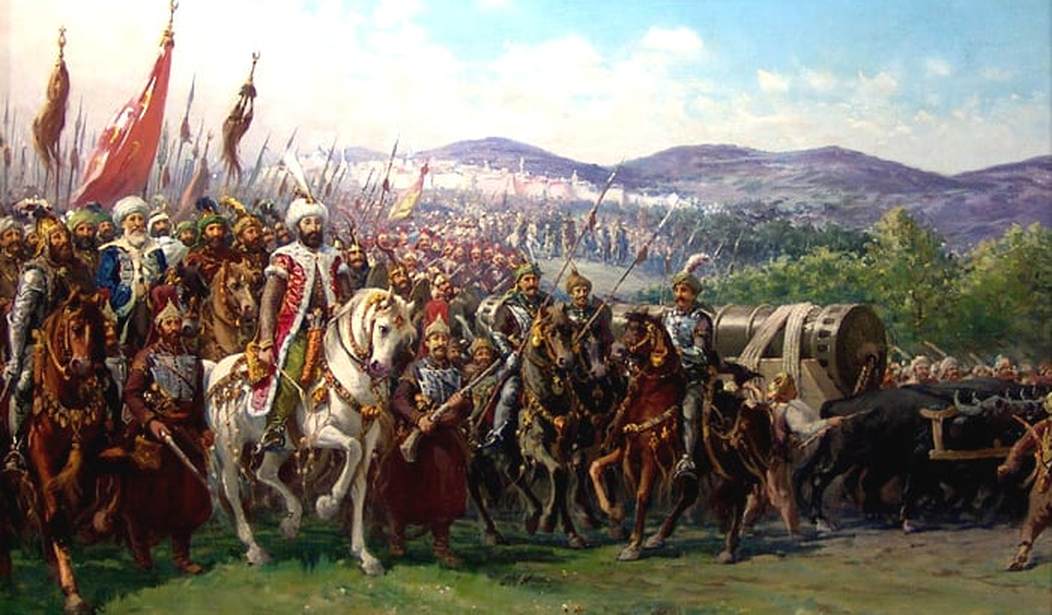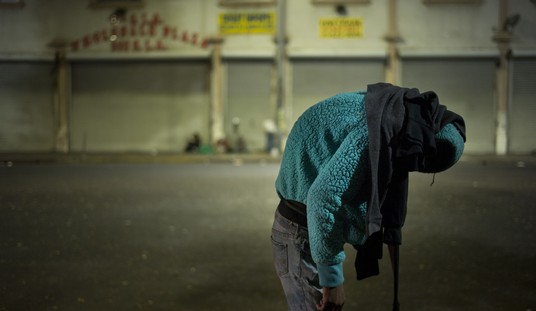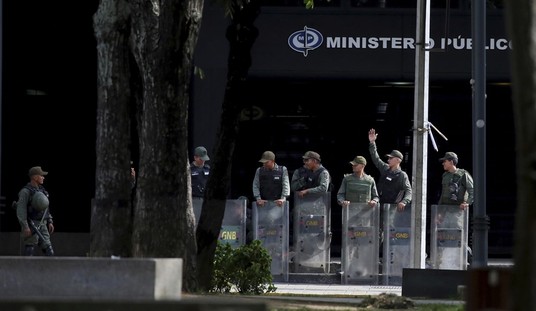While the West continues self-flagellating itself about its history, today, Turkey is celebrating a day when its ancestors slaughtered and raped thousands of people solely for the “sin” of being Christian.
Precisely 570 years ago today, on May 29, 1453, the Turks sacked and transformed the ancient Christian kingdom of Constantinople into Muslim Istanbul. And, as they do every year, Turks—beginning with their president—are saber rattling in commemoration of that “glorious” event.
No doubt, Recep Tayyip Erdoğan—who, “coincidentally” enough, timed his latest presidential victory to coincide with this date—is today saying the same sorts of things he says every year. Last May 29, for example, he said, “As our ancestors buried Byzantium, let us hope that today, by building our vision for 2053 [the 600th anniversary of the sack of Constantinople], we also manage to put in the time warp of history the current Byzantines who are plotting against us.”
In order to understand the significance of this otherwise cryptic remark—most Westerners are today totally unaware of the history between Muslim Turkey and Christian Byzantium—some background is necessary.
Towards the end of the first millennium, the Turks, whose origins lay in the eastern steppes of Asia, had become Muslim and began to raid and conquer portions of Asia Minor, which was then and had been for a millennium Christian. By the end of the fourteenth century they had conquered it entirely and began eying Constantinople, just across the Bosporus. Although generations of Turks repeatedly besieged it, it would fall to Ottoman Sultan Muhammad II (pronounced “Mehmet”), Erdoğan’s hero.
But why did Muhammad II and his predecessors attack Constantinople in the first place? What made it an enemy to the Turks? The same thing that made every non-Muslim nation an enemy: it was “infidel”—in this case, Christian—and therefore in need of subjugating. That was the sole justification and pretext—the sole “grievance”—that propelled the Turks to besiege it (as their Arab counterparts did in the seventh and eighth centuries).
From the start, deceit was part of Muhammad’s arsenal. When he first became sultan and was too busy consolidating his authority, Muhammad “swore by the god of their false prophet, by the prophet whose name he bore,” a bitter Christian contemporary retrospectively wrote, that “he was their [the Christians’] friend, and would remain for the whole of his life a friend and ally of Constantinople.” Although they believed him, Muhammad was taking advantage of “the basest arts of dissimulation and deceit,” wrote Edward Gibbon. “Peace was on his lips while war was in his heart.”
Muhammad also exhorted his Muslim army with jihadist ideology once the siege commenced, including by unleashing throngs of preachers who cried throughout the Muslim camp surrounding Constantinople,
Children of Muhammad, be of good heart, for tomorrow we shall have so many Christians in our hands that we will sell them, two slaves for a ducat, and will have such riches that we will all be of gold, and from the beards of the Greeks we will make leads for our dogs, and their families will be our slaves. So be of good heart and be ready to die cheerfully for the love of our [past and present] Muhammad.
“Recall the promises of our Prophet concerning fallen warriors in the Koran,” Sultan Muhammad himself exhorted: “the man who dies in combat shall be transported bodily to paradise and shall dine with [prophet] Muhammad in the presence of women, handsome boys, and virgins.”
The mention of “handsome boys” was not just an accurate reference to the Koran’s promise (e.g., 52:24, 56:17, and 76:19); Muhammad II was a notorious pedophile. His enslavement and rape of Jacob Notaras—a handsome 14-year-old nobleman’s son in Constantinople, whom Muhammad forced into becoming his personal catamite until he escaped—was only one of the most infamous. Vlad III Dracula’s younger brother, “Radu the Handsome,” was also turned into Muhammad’s “boy toy.”
Or consider the lecherous behavior of Muhammad’s army one they had penetrated inside Constantinople (the following quotes are all from contemporary sources and eyewitnesses):
When they had massacred and there was no longer any resistance, they were intent on pillage and roamed through the town stealing, disrobing, pillaging, killing, raping, taking captive men, women, children, old men, young men, monks, priests, people of all sorts and conditions.… There were virgins who awoke from troubled sleep to find those brigands standing over them with bloody hands and faces full of abject fury.… [The Turks] dragged them, tore them, forced them, dishonored them, raped them at the cross-roads and made them submit to the most terrible outrages.… Tender children were brutally snatched from their mothers’ breasts and girls were pitilessly given up to strange and horrible unions, and a thousand other terrible things happened.
Because thousands of citizens had fled to and were holed up in Hagia Sophia—then one of the Christian world’s grandest basilicas—it offered an excellent harvest of slaves once its doors were axed down:
One Turk would look for the captive who seemed the wealthiest, a second would prefer a pretty face among the nuns. … Each rapacious Turk was eager to lead his captive to a safe place, and then return to secure a second and a third prize. … Then long chains of captives could be seen leaving the church and its shrines, being herded along like cattle or flocks of sheep.
The slavers sometimes fought each other to the death over “any well-formed girl,” even as many of the latter “preferred to cast themselves into the wells and drown rather than fall into the hands of the Turks.”
Having taken possession of the Hagia Sophia—which at the time of its capture had served as a cathedral for a thousand years—the invaders “engaged in every kind of vileness within it, making of it a public brothel.” On “its holy altars” they enacted “perversions with our women, virgins, and children,” including “the Grand Duke’s daughter who was quite beautiful.” She was forced to “lie on the great altar of Hagia Sophia with a crucifix under her head and then raped.”
Next “they paraded the [Hagia Sophia’s main] Crucifix in mocking procession through their camp, beating drums before it, crucifying the Christ again with spitting and blasphemies and curses. They placed a Turkish cap … upon His head, and jeeringly cried, ‘Behold the god of the Christians!’”
Practically all other churches in the ancient city suffered the same fate. “The crosses which had been placed on the roofs or the walls of churches were torn down and trampled.” The Eucharist was “thrown to the ground and kicked.” Bibles were stripped of their gold or silver illuminations before being burned. “Icons were without exception given to the flames.” Patriarchal vestments were placed on the haunches of dogs; priestly garments were placed on horses.
“Everywhere there was misfortune, everyone was touched by pain” when Sultan Muhammad finally made his grand entry into the city. “There were lamentations and weeping in every house, screaming in the crossroads, and sorrow in all churches; the groaning of grown men and the shrieking of women accompanied looting, enslavement, separation, and rape.”
Finally, Muhammad had the “wretched citizens of Constantinople” dragged before his men during evening festivities and “ordered many of them to be hacked to pieces, for the sake of entertainment.” The rest of the city’s population—as many as 45,000—was hauled off in chains to be sold as slaves.
This is the man whom Turkey and its president honor—including by rededicating the Hagia Sophia, which had been a museum for nearly a century, back into a victory mosque. Then, Erdoğan had proclaimed in a speech:
The conquest of Istanbul [Constantinople] and the conversion of the Hagia Sophia into a mosque are among the most glorious chapters of Turkish history.….The resurrection of the Hagia Sophia represents our memory full of heydays in our history.
From here one can better understand Erdoğan’s assertion, “As our ancestors buried Byzantium, let us hope that today, by building our vision for 2053, we also manage to put in the time warp of history the current Byzantines who are plotting against us.”
Of course, the Byzantines never “plotted” against the Turks’ ancestors; quite the opposite—the invading Turks deceived and then attacked them for no other reason than that they were “infidels” who rejected Islam and, as such, deserved to be slaughtered, raped, and enslaved.
The message is clear; jihadist ideology dominates the highest echelons of Turkey. Hating, invading, and conquering neighboring peoples—not due to any grievances but because they are non-Muslim—with all the attending atrocities, rapes, destruction, and mass slavery is apparently the ideal, to resume once the sunset of Western power is complete, which, according to Erdoğan’s own daughter, Esra, is any day now. Just recently she tweeted “There is little left for the Islamic crescent to break the Western cross”—an assertion more fitting of ISIS than the daughter of a president who works as a “sociologist.”
Meanwhile, because Americans are used to seeing statues of their own nation’s heroes toppled—for no other reason than they were white and/or Christian, and therefore inherently evil—the significance of Erdoğan’s words and praise of Muhammad II—who as a nonwhite Muslim is further immune from Western criticism, as that would be “racist”—remains lost to them.
All historic quotes in this article were sourced from and are documented in chapter 7 of the author’s Sword and Scimitar: Fourteen Centuries of War between Islam and the West.










Join the conversation as a VIP Member